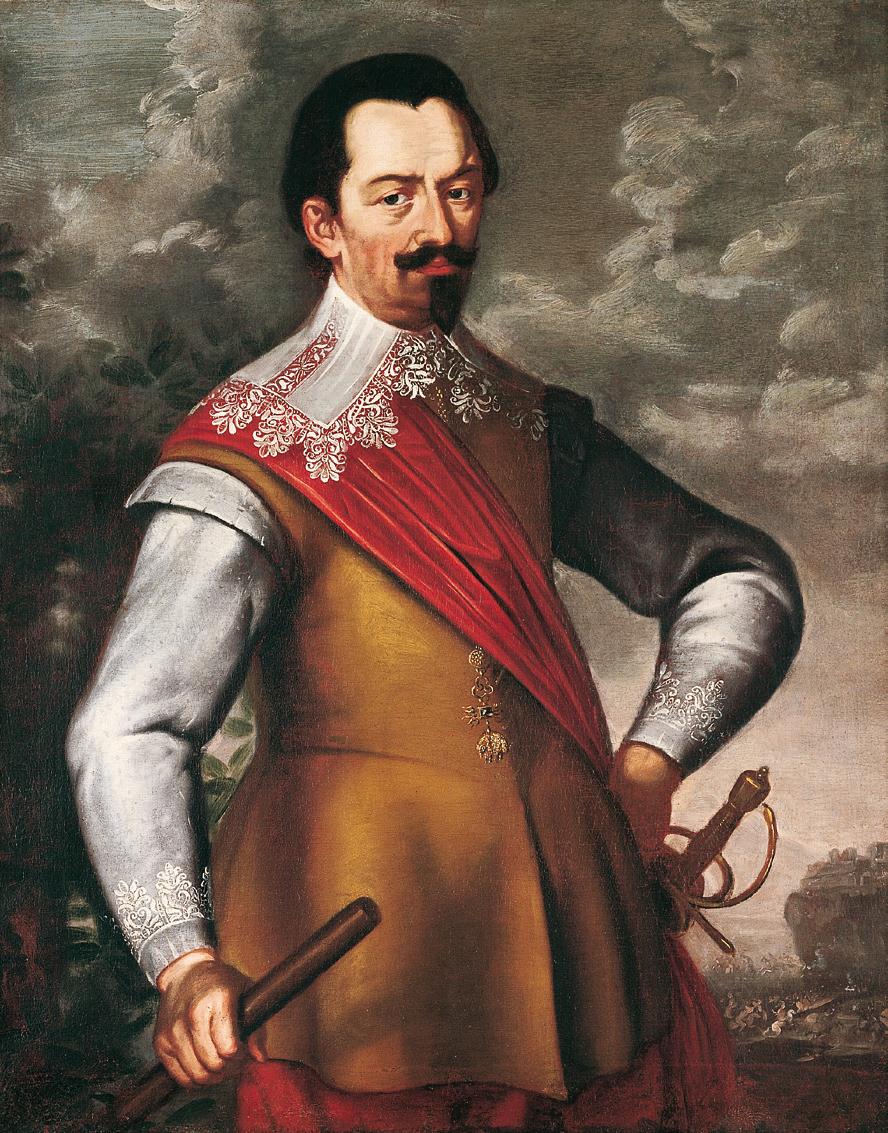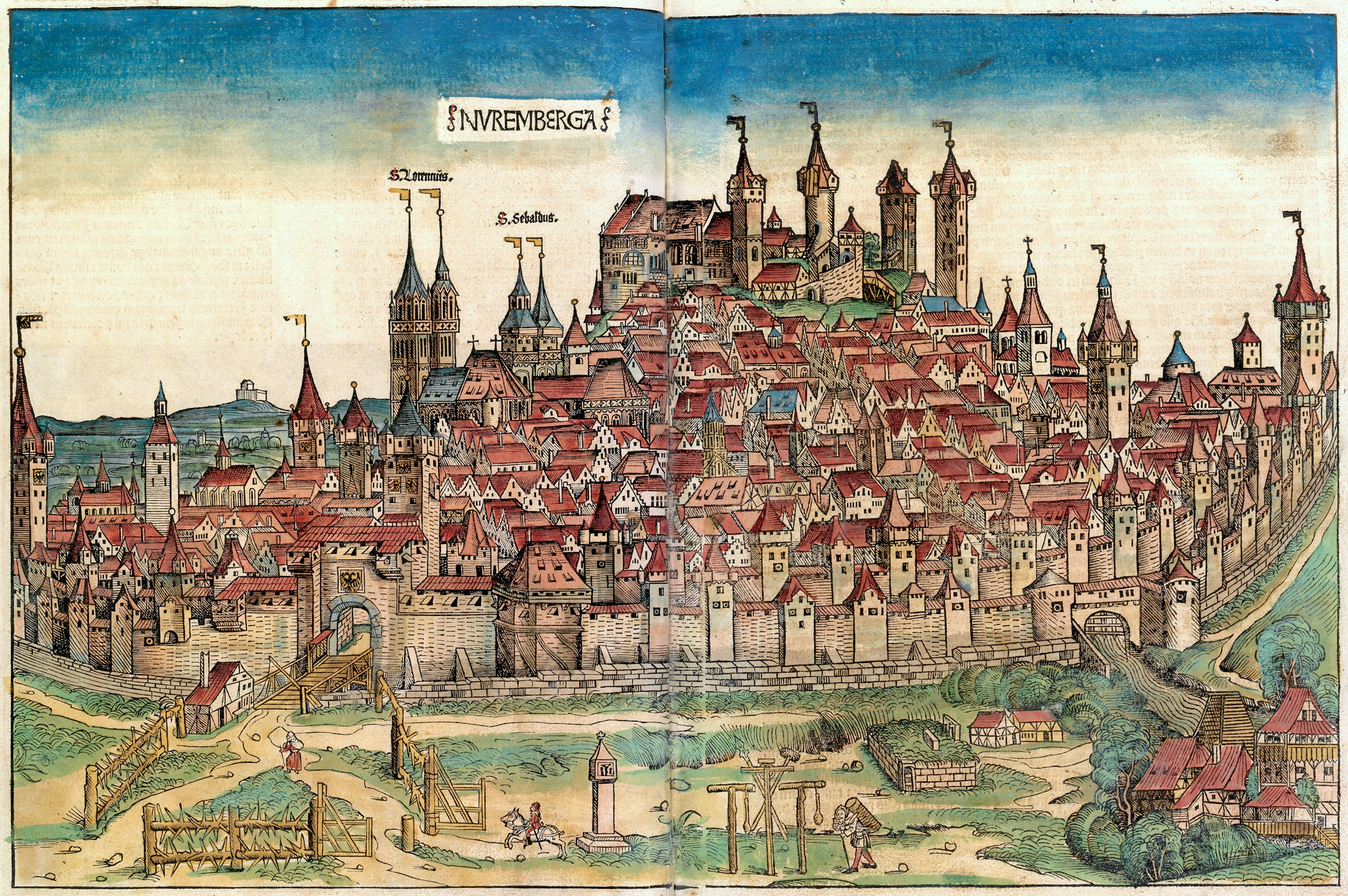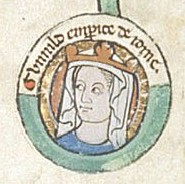|
Battle Of Fürth
The Battle of Fürth was fought on 3 September 1632 between the Catholic forces of Holy Roman Emperor Ferdinand II and the Protestant forces of King Gustavus II Adolphus of Sweden during the period of Swedish intervention in the Thirty Years War. The tactical victory by the Catholic forces allowed the Imperial army to quickly advance into Saxony, while the Swedish forces were forced into retreat. Regional background Fürth was a market town, whose marketing license had been suspended under Holy Roman Emperor Heinrich III, losing the privilege and all that went with it, to nearby Nürnberg (English: Nuremberg) shortly after its founding. This situation changed after Heinrich's death, and in 1062 Fürth was once again permitted to have its own market. However, Fürth could not readily compete with Nuremberg, which had steadily grown and prospered in the ensuing years. In the following centuries, the City of Nuremberg became the most important town in the region, even making ... [...More Info...] [...Related Items...] OR: [Wikipedia] [Google] [Baidu] |
Thirty Years' War
The Thirty Years' War, fought primarily in Central Europe between 1618 and 1648, was one of the most destructive conflicts in History of Europe, European history. An estimated 4.5 to 8 million soldiers and civilians died from battle, famine, or disease, while parts of Germany reported population declines of over 50%. Related conflicts include the Eighty Years' War, the War of the Mantuan Succession, the Franco-Spanish War (1635–1659), Franco-Spanish War, the Torstenson War, the Dutch-Portuguese War, and the Portuguese Restoration War. The war had its origins in the 16th-century Reformation, which led to religious conflict within the Holy Roman Empire. The 1555 Peace of Augsburg attempted to resolve this by dividing the Empire into Catholic and Lutheran states, but the settlement was destabilised by the subsequent expansion of Protestantism beyond these boundaries. Combined with differences over the limits of imperial authority, religion was thus an important factor in star ... [...More Info...] [...Related Items...] OR: [Wikipedia] [Google] [Baidu] |
Protestant
Protestantism is a branch of Christianity that emphasizes Justification (theology), justification of sinners Sola fide, through faith alone, the teaching that Salvation in Christianity, salvation comes by unmerited Grace in Christianity, divine grace, the priesthood of all believers, and the Bible as the sole infallible source of authority for Christian faith and practice. The five solae, five ''solae'' summarize the basic theological beliefs of mainstream Protestantism. Protestants follow the theological tenets of the Reformation, Protestant Reformation, a movement that began in the 16th century with the goal of reforming the Catholic Church from perceived Criticism of the Catholic Church, errors, abuses, and discrepancies. The Reformation began in the Holy Roman Empire in 1517, when Martin Luther published his ''Ninety-five Theses'' as a reaction against abuses in the sale of indulgences by the Catholic Church, which purported to offer the remission of the Purgatory, temporal ... [...More Info...] [...Related Items...] OR: [Wikipedia] [Google] [Baidu] |
Johann Tserclaes, Count Of Tilly
Johann Tserclaes, Count of Tilly (; ; ; February 1559 – 30 April 1632) was a field marshal who commanded the Catholic League's forces in the Thirty Years' War. From 1620 to 1631, he won an unmatched and demoralizing string of important victories against the Protestants, including White Mountain, Wimpfen, Höchst, Stadtlohn and the Conquest of the Palatinate. He destroyed a Danish army at Lutter and sacked the Protestant city of Magdeburg, which caused the deaths of some 20,000 of the city's inhabitants, both defenders and non-combatants, out of a total population of 25,000. However, Tilly's army was eventually crushed at Breitenfeld in 1631 by the Swedish army of King Gustavus Adolphus. A bullet from a Swedish arquebus mortally wounded him at the Battle of Rain on 15 April 1632, and he died two weeks later in Ingolstadt on 30 April 1632, at the age of 73. Along with Duke Albrecht von Wallenstein of Friedland and Mecklenburg, he was one of two chief commanders ... [...More Info...] [...Related Items...] OR: [Wikipedia] [Google] [Baidu] |
Battle Of Rain
The Battle of Rain took place on 15 April 1632 near Rain in Bavaria during the Thirty Years' War. It was fought by a Swedish army under Gustavus Adolphus of Sweden, and a Catholic League force led by Johann Tserclaes, Count of Tilly. The battle resulted in a Swedish victory, while Tilly was severely wounded and later died of his injuries. Outnumbered and with many inexperienced troops, Tilly built defensive works along the River Lech, centred on the town of Rain, hoping to delay Gustavus long enough for Imperial reinforcements under Albrecht von Wallenstein to reach him. On 14 April, the Swedes bombarded the defences with artillery, then crossed the river the next day, inflicting nearly 3,000 casualties, including Tilly. On 16 April, Maximilian of Bavaria ordered a retreat, abandoning his supplies and guns. Despite this victory, the Swedes had been drawn away from their bases in Northern Germany and when Maximilian linked up with Wallenstein found themselves besieged in ... [...More Info...] [...Related Items...] OR: [Wikipedia] [Google] [Baidu] |
Ford (crossing)
A ford is a shallow place with good footing where a river or stream may be crossed by wading, on horseback, or inside a vehicle getting its wheels wet. A ford may occur naturally or be constructed. Fords may be impassable during high water. A low-water crossing is a low bridge that allows crossing over a river or stream when water is low but may be treated as a ford when the river is high and water covers the crossing. The word ''ford'' is both a noun (describing the water crossing itself) and a verb (describing the act of crossing a ford). Description A ford is a much cheaper form of river crossing than a bridge, and it can transport much more weight than a bridge, but it may become impassable after heavy rain or during flood conditions. A ford is therefore normally only suitable for very minor roads (and for paths intended for walkers and horse riders etc.). Most modern fords are usually shallow enough to be crossed by cars and other wheeled or tracked vehicles (a proce ... [...More Info...] [...Related Items...] OR: [Wikipedia] [Google] [Baidu] |
Pegnitz (river)
The Pegnitz () is a river in Franconia in the Germany, German States of Germany, state of Bavaria. The Pegnitz has its source in the Pegnitz (town), town of the same name at an altitude of and meets the Rednitz at in Fürth to form the Regnitz river. Shortly after the source, the Pegnitz unites with the long Fichtenohe while keeping the name of the shorter tributary. Some therefore consider the Fichtenohe as the upper course of the river Pegnitz. The source of the Fichtenohe is in Lindenhardt Forest (Landkreis Bayreuth) north of the town of Pegnitz. The Pegnitz is about long, with Fichtenohe . The river is inhabited by numerous ducks, Eurasian coot, coots, swans, and gulls. Tributaries * Fichtenohe (left tributary) * Flembach (left tributary) * Hirschbach (left tributary) * Högenbach (left tributary from the Pommelsbrunn direction) * Happurger Bach (left tributary) * Sittenbach (right tributary) * Hammerbach (left tributary) * Sandbach (left tributary) * Schnaittach (Pegn ... [...More Info...] [...Related Items...] OR: [Wikipedia] [Google] [Baidu] |
Rednitz
The Rednitz () is a long river in Franconia, Germany, tributary of the Regnitz (more precisely: its southern, left headstream). Slightly richer in water than the other source river Pegnitz and also richer in tributaries, it is hydrographically regarded as the upper reaches of the Regnitz, although the longest flow path in its system is approx. 3 km shorter than that in the Pegnitz system. The Rednitz is formed by the confluence of the rivers Franconian Rezat and Swabian Rezat, in Georgensgmünd ( district of Roth). The Rednitz flows north through Roth bei Nürnberg, Schwabach and the southwestern quarters of Nuremberg. The Rednitz joins the Pegnitz to form the Regnitz in Fürth. The river first appeared in written sources in the 8th century with the Latin name Radantia. In the 11th century, the name of the river was given as Ratenza. Sources Franz X. Bogner: ''Rednitz und Regnitz. Eine Luftbildreise von Weißenburg bis Bamberg''. Luftbildband. Verlag Fränkischer Tag, ... [...More Info...] [...Related Items...] OR: [Wikipedia] [Google] [Baidu] |
Free Imperial City Of Nuremberg
The Free Imperial City of Nuremberg () was a free imperial city – independent city-state – within the Holy Roman Empire. After Nuremberg gained piecemeal independence from the Burgraviate of Nuremberg in the High Middle Ages and considerable territory from Duchy of Bavaria, Bavaria in the War of the Succession of Landshut, Landshut War of Succession, it grew to become one of the largest and most important Imperial cities, the 'unofficial capital city, capital' of the Empire, particularly because numerous Imperial Diet (Holy Roman Empire), Imperial Diets () and courts met at Nuremberg Castle between 1211 and 1543. Because of the many Diet of Nuremberg, Diets of Nuremberg, Nuremberg became an important routine place of the administration of the Empire during this time. The Golden Bull of 1356, issued by Charles IV, Holy Roman Emperor, Emperor Charles IV (reigned 1346–1378), named Nuremberg as the city where newly elected kings of Germany must hold their first Imperial Diet, ma ... [...More Info...] [...Related Items...] OR: [Wikipedia] [Google] [Baidu] |
Nuremberg
Nuremberg (, ; ; in the local East Franconian dialect: ''Nämberch'' ) is the Franconia#Towns and cities, largest city in Franconia, the List of cities in Bavaria by population, second-largest city in the States of Germany, German state of Bavaria, and its 544,414 (2023) inhabitants make it the List of cities in Germany by population, 14th-largest city in Germany. Nuremberg sits on the Pegnitz (river), Pegnitz, which carries the name Regnitz from its confluence with the Rednitz in Fürth onwards (), and on the Rhine–Main–Danube Canal, that connects the North Sea to the Black Sea. Lying in the Bavarian Regierungsbezirk, administrative region of Middle Franconia, it is the largest city and unofficial capital of the entire cultural region of Franconia. The city is surrounded on three sides by the , a large forest, and in the north lies (''garlic land''), an extensive vegetable growing area and cultural landscape. The city forms a continuous conurbation with the neighbouring ... [...More Info...] [...Related Items...] OR: [Wikipedia] [Google] [Baidu] |
Henry III, Holy Roman Emperor
Henry III (, 28 October 1016 – 5 October 1056), called the Black () or the Pious, was Holy Roman Emperor from 1046 until his death in 1056. A member of the Salian dynasty, he was the eldest son of Conrad II and Gisela of Swabia. Henry was raised by his father, who made him Duke of Duchy of Bavaria, Bavaria in 1026, appointed him co-ruler in 1028 and bestowed him with the duchy of Swabia and the Kingdom of Burgundy ten years later in 1038. The emperor's death the following year ended a remarkably smooth and harmonious transition process towards Henry's sovereign rule, that was rather uncharacteristic for the Ottonian dynasty, Ottonian and Salian dynasty, Salian monarchs. Henry succeeded Conrad II as Duke of Carinthia and King of Italy and continued to pursue his father's political course on the basis of ''virtus et probitas'' (courage and honesty), which led to an unprecedented sacral exaltation of the kingship. In 1046 Henry ended the History of the papacy (1048–1257), papal s ... [...More Info...] [...Related Items...] OR: [Wikipedia] [Google] [Baidu] |
Market Town
A market town is a settlement most common in Europe that obtained by custom or royal charter, in the Middle Ages, a market right, which allowed it to host a regular market; this distinguished it from a village or city. In Britain, small rural towns with a hinterland of villages are still commonly called market towns, as sometimes reflected in their names (e.g. Downham Market, Market Rasen, or Market Drayton). Modern markets are often in special halls, but this is a relatively recent development. Historically the markets were open-air, held in what is usually called (regardless of its actual shape) the market square or market place, sometimes centred on a market cross ( mercat cross in Scotland). They were and are typically open one or two days a week. In the modern era, the rise of permanent retail establishments reduced the need for periodic markets. History The primary purpose of a market town is the provision of goods and services to the surrounding locality. Al ... [...More Info...] [...Related Items...] OR: [Wikipedia] [Google] [Baidu] |
Albrecht Wallenstein
Albrecht Wenzel Eusebius von Wallenstein, Duke of Friedland (; 24 September 1583 – 25 February 1634), also von Waldstein (), was a Bohemian military leader and statesman who fought on the Catholic side during the Thirty Years' War (1618–1648). His successful martial career made him one of the richest and most influential men in the Holy Roman Empire by the time of his death. Wallenstein became the Commander-in-chief, supreme commander of the armies of Holy Roman Emperor Ferdinand II, Holy Roman Emperor, Ferdinand II and was a major figure of the Thirty Years' War. Wallenstein was born in the Kingdom of Bohemia into a poor Czech Protestant noble family, affiliated with the Utraquist Hussites, a group of notable anti-German sentiment in some of its circles, and following the teachings of the early reformer Jan Hus. He acquired a multilingual university education across Europe and converted to Catholicism in 1606. A marriage in 1609 to the wealthy widow of a Bohemian landown ... [...More Info...] [...Related Items...] OR: [Wikipedia] [Google] [Baidu] |







